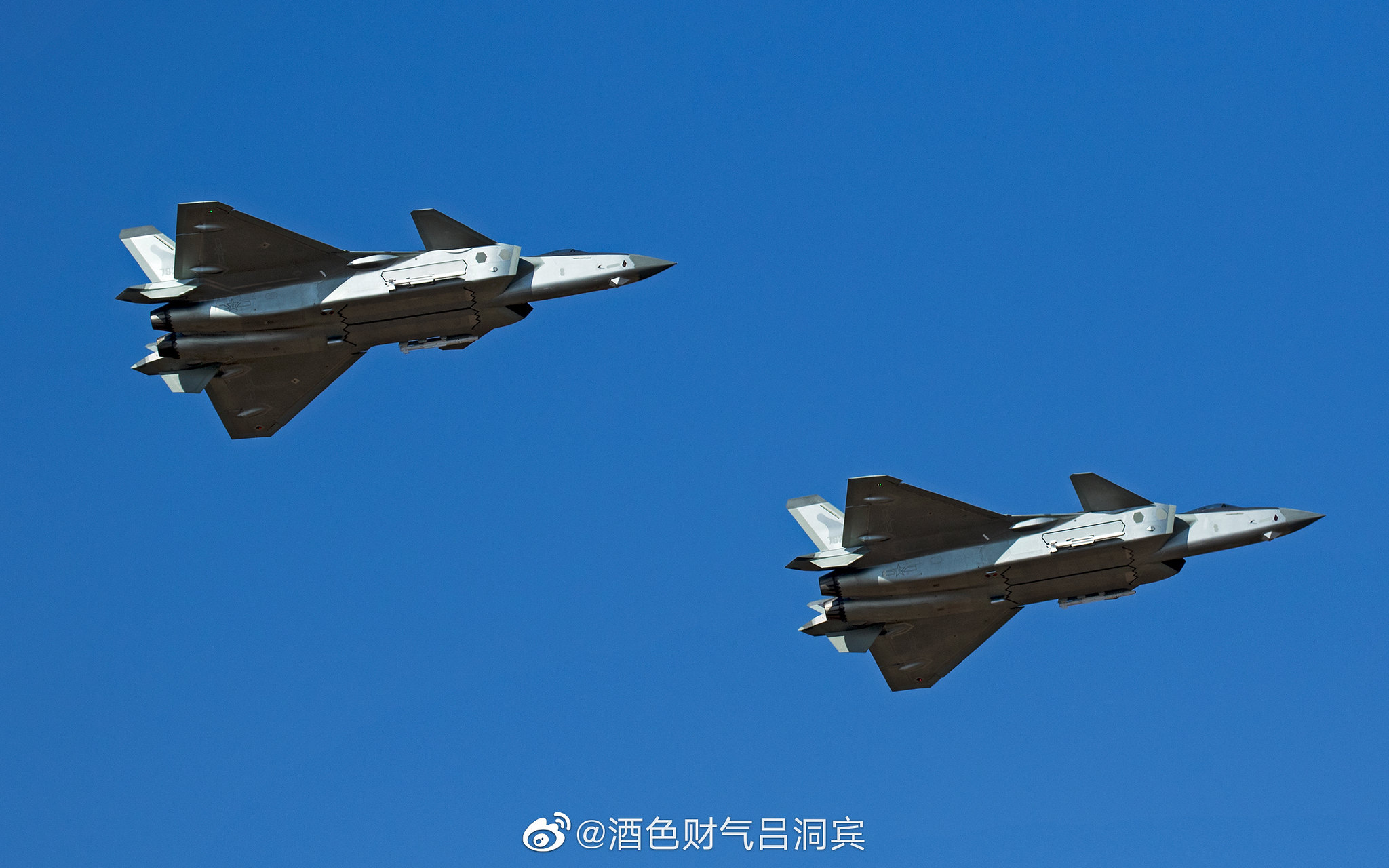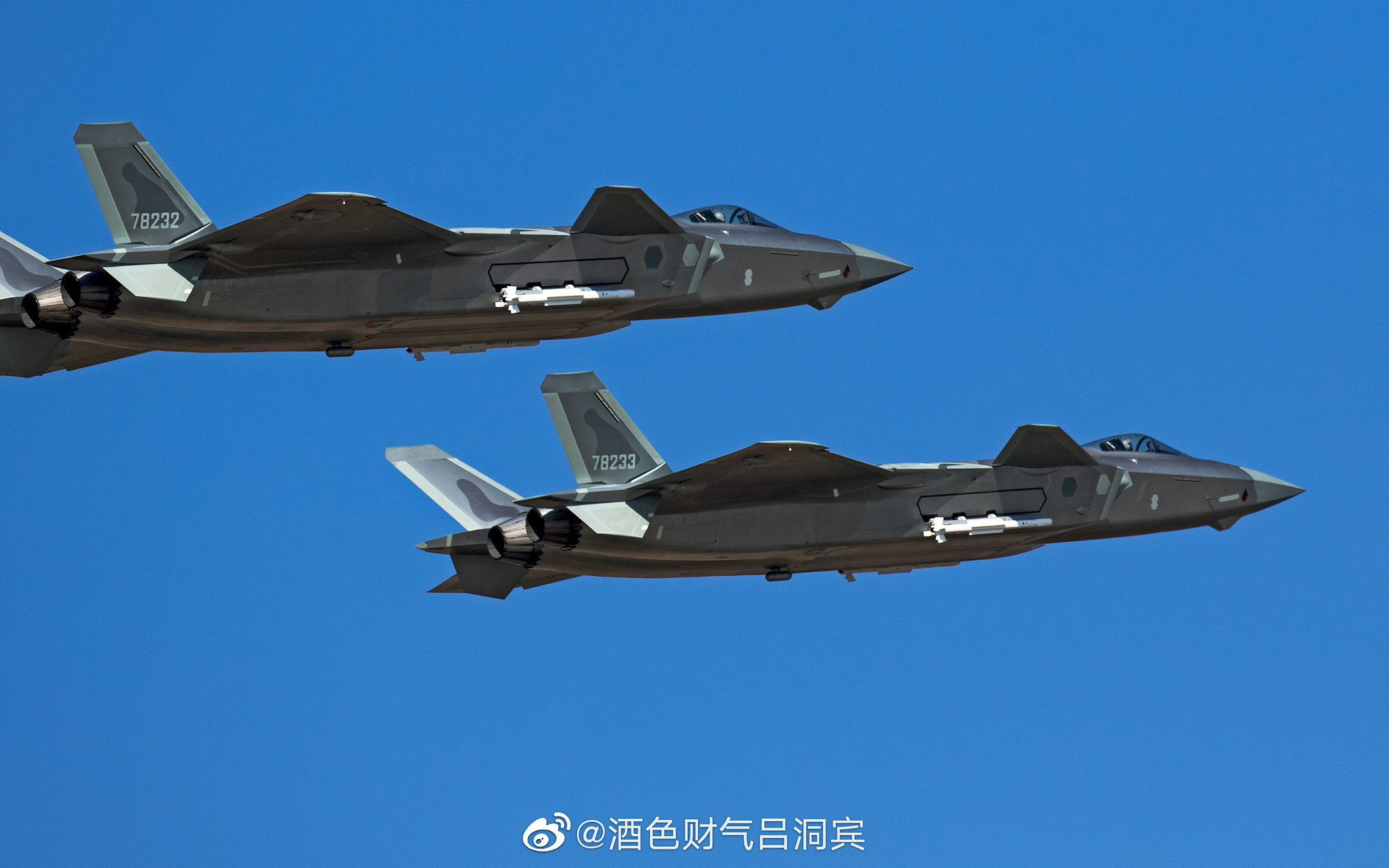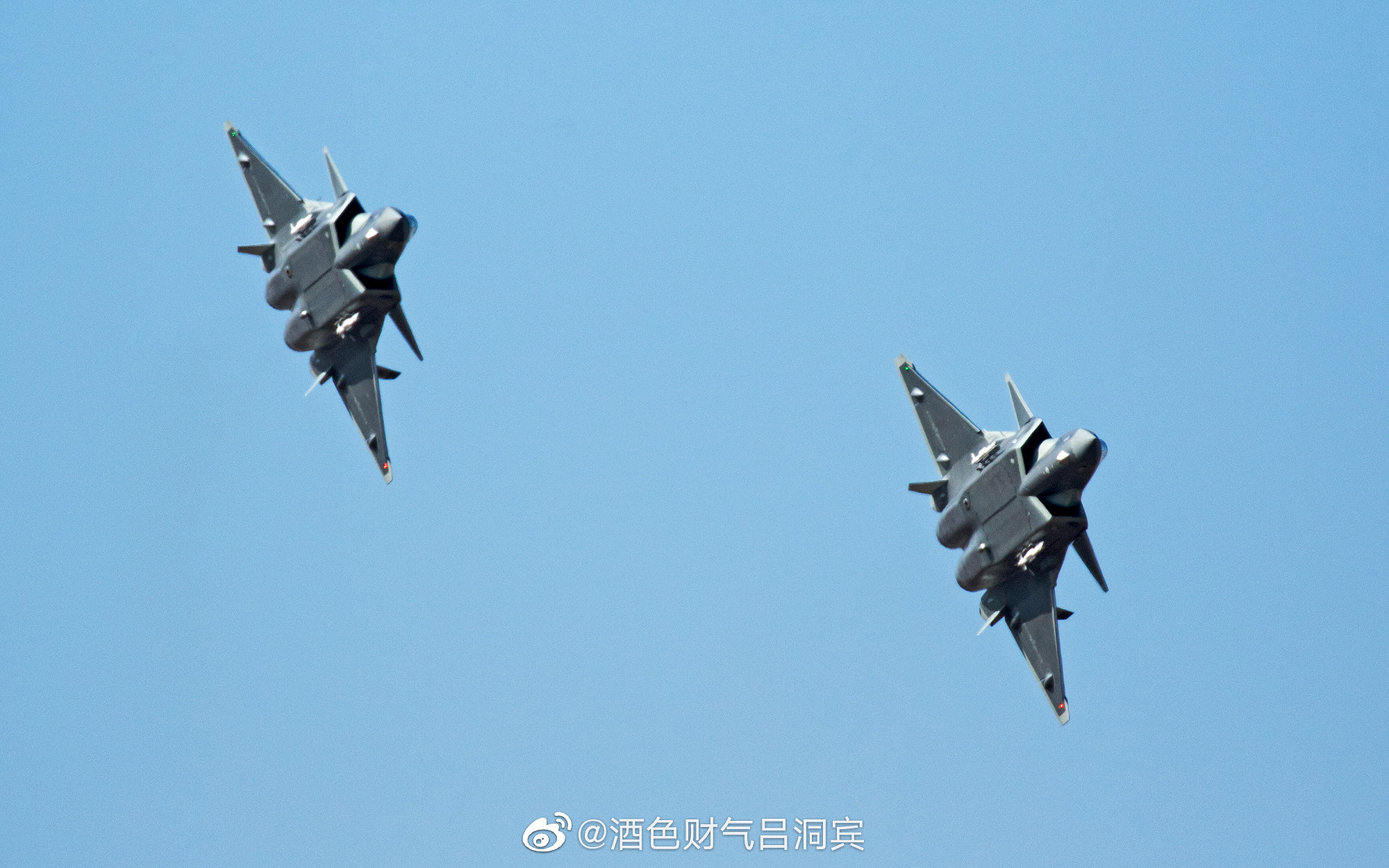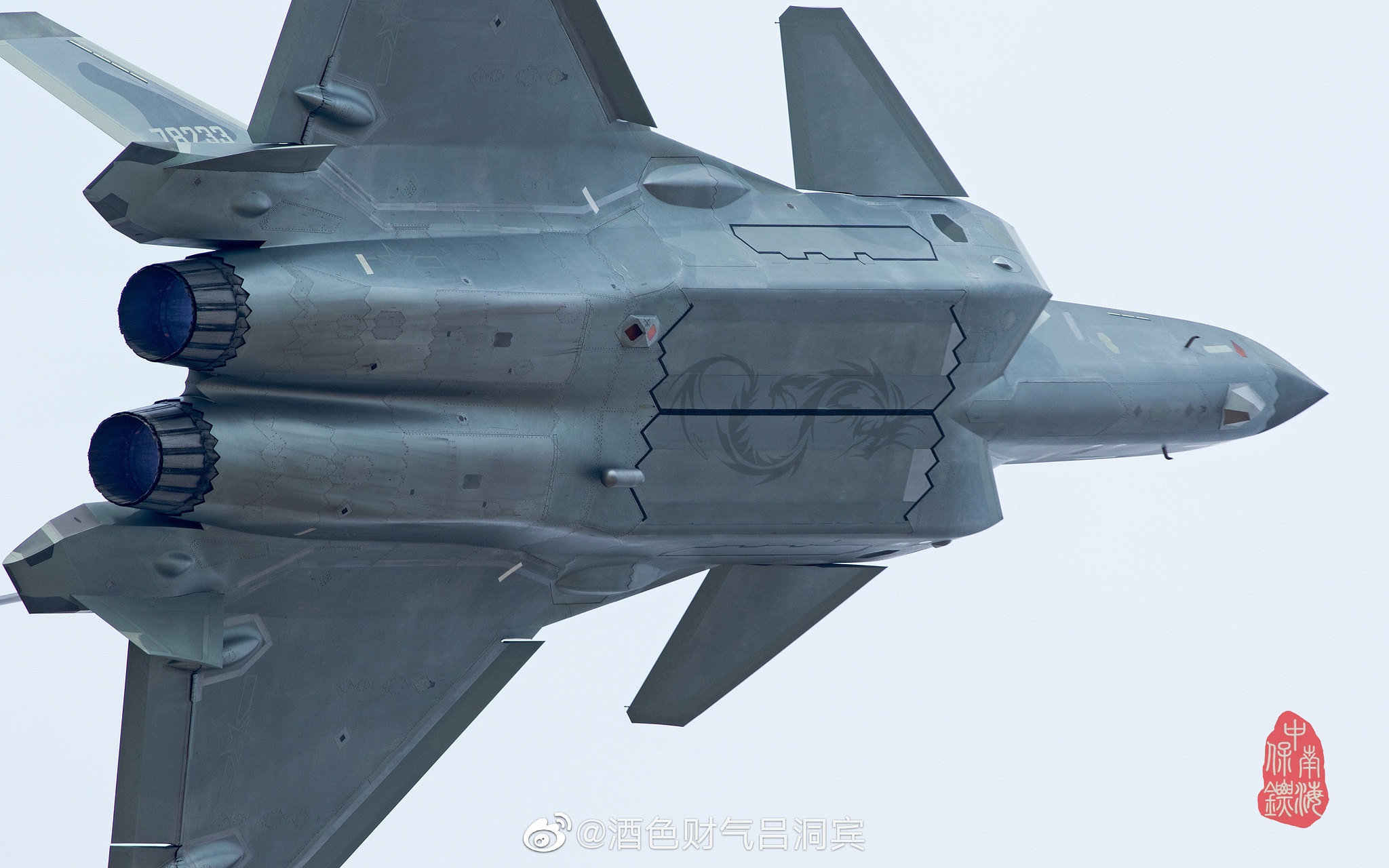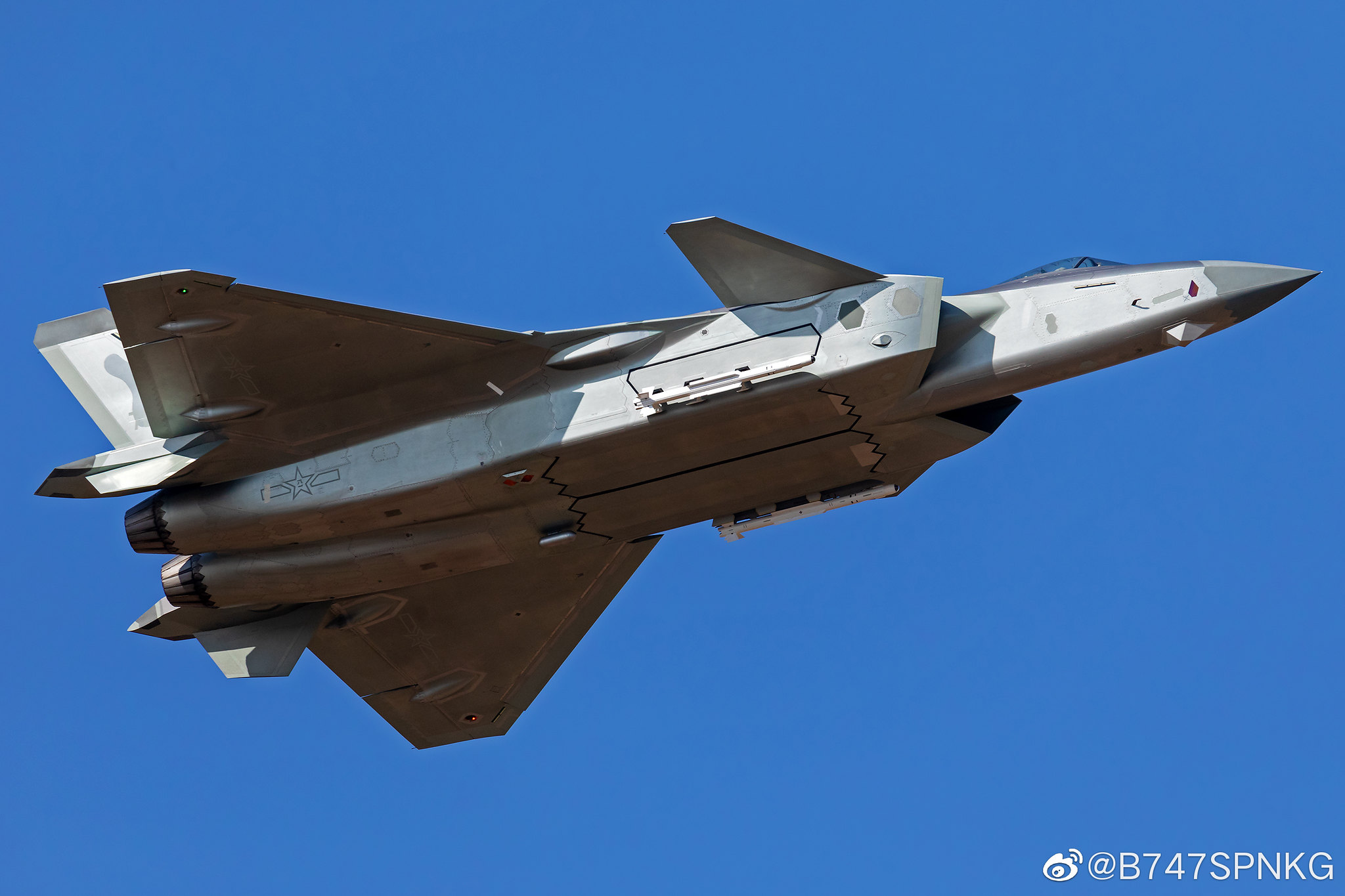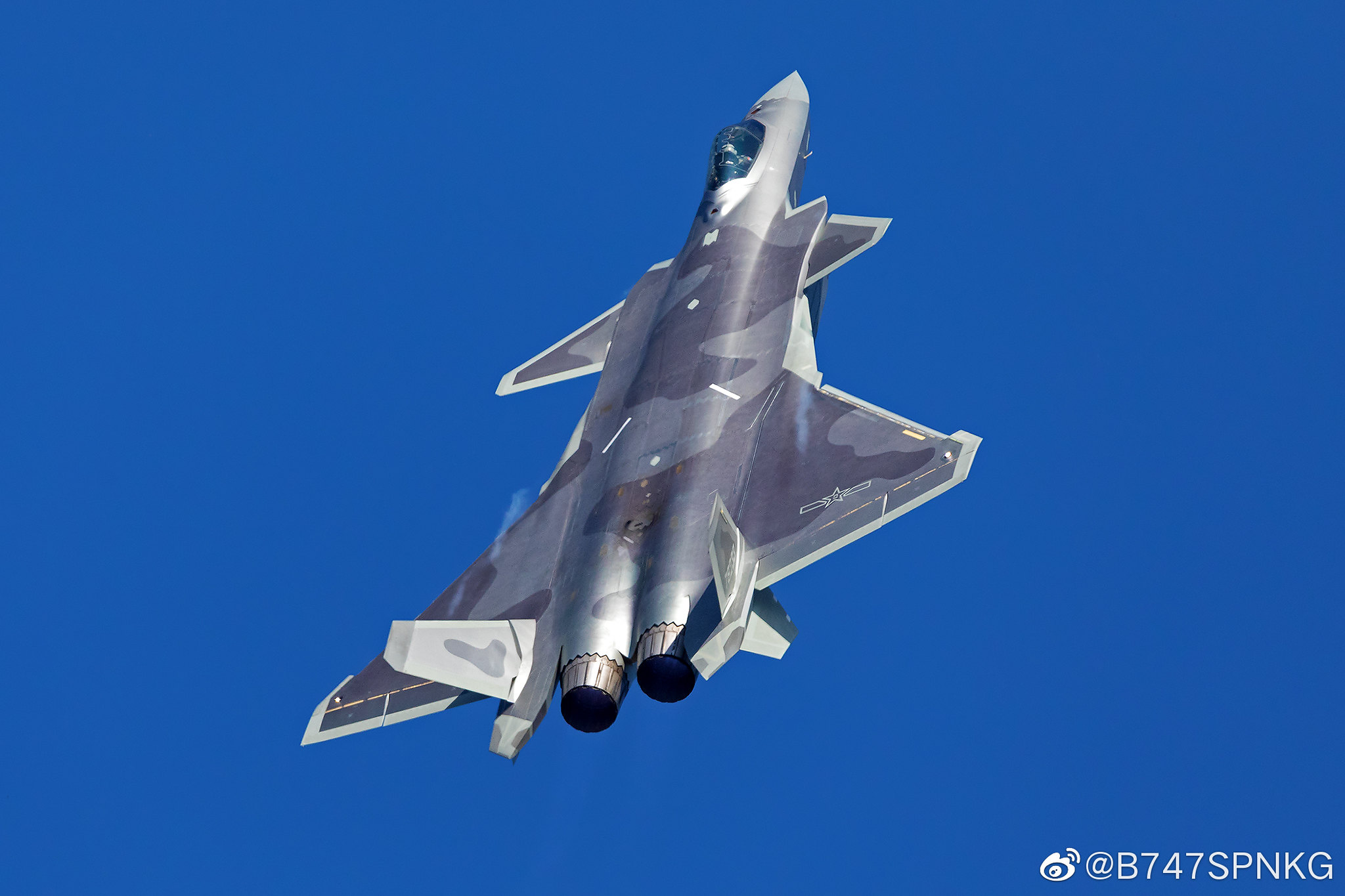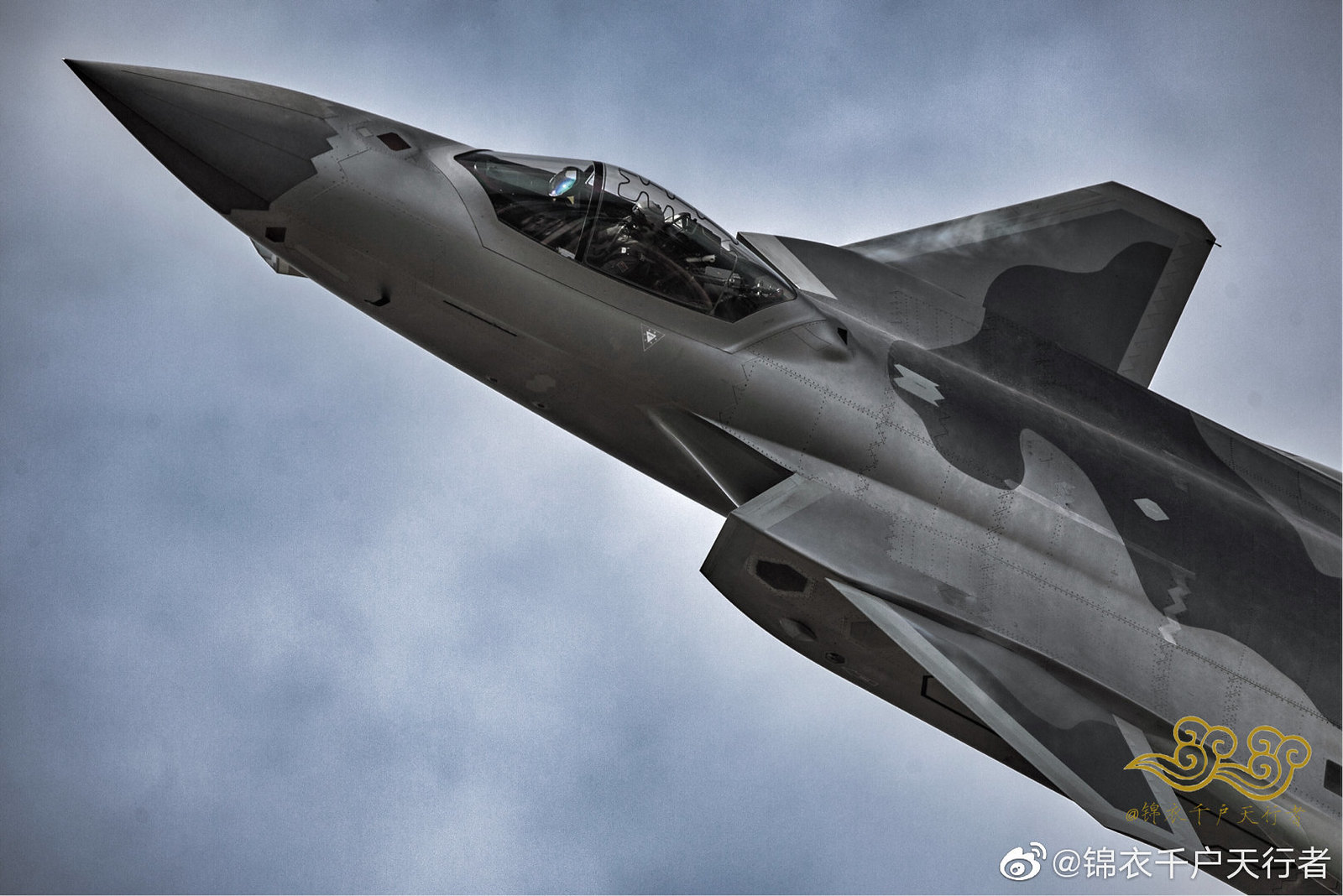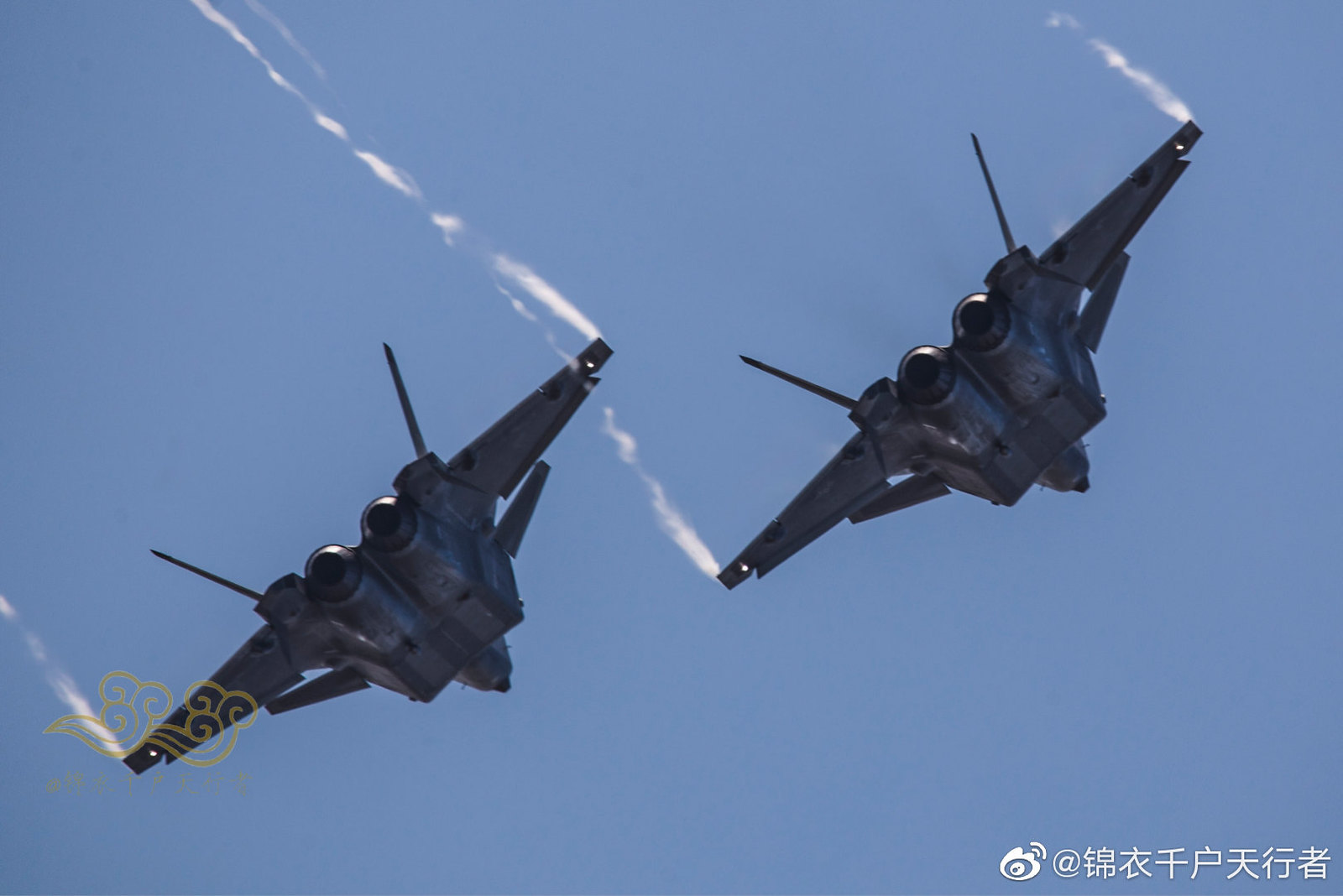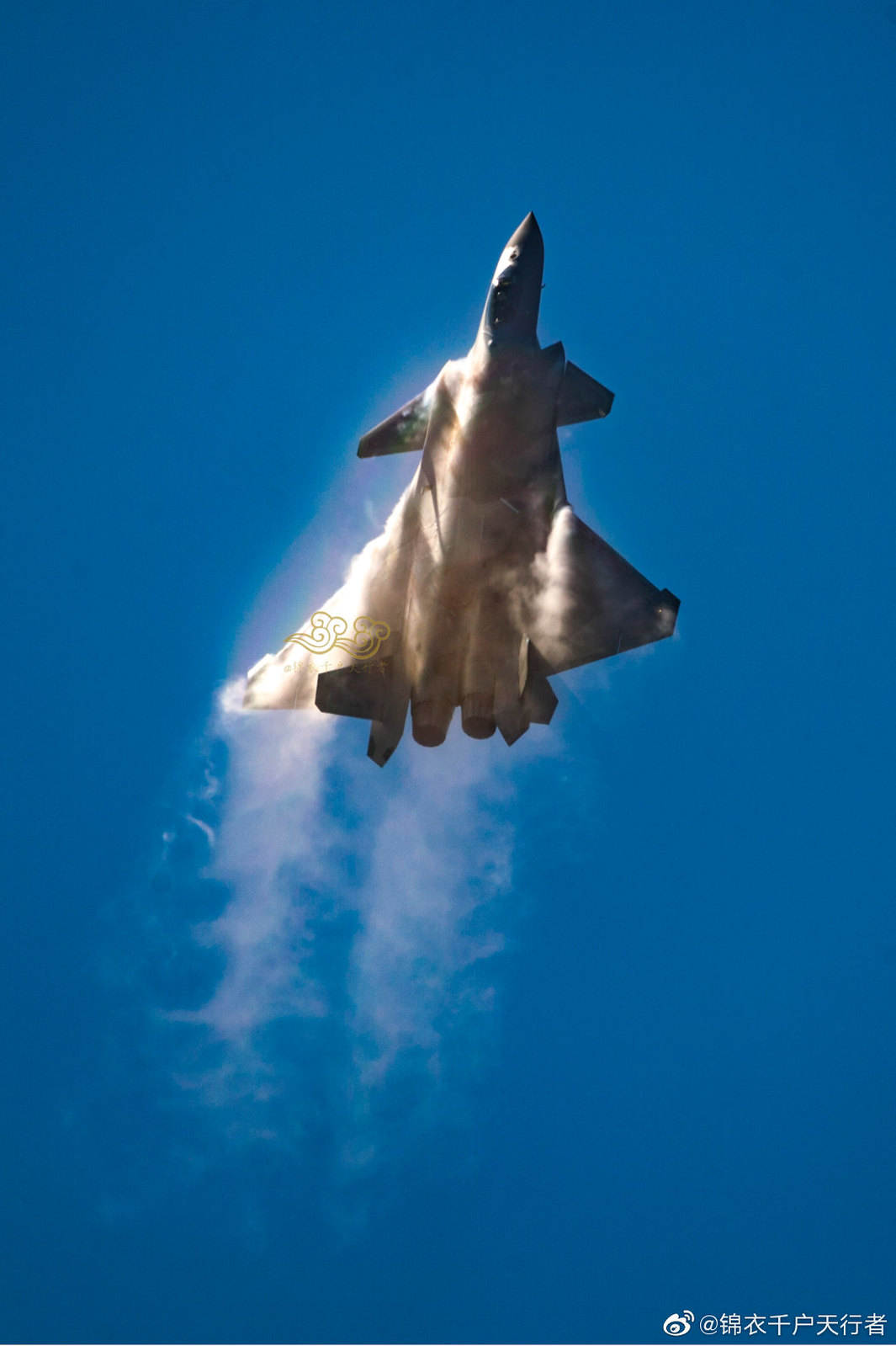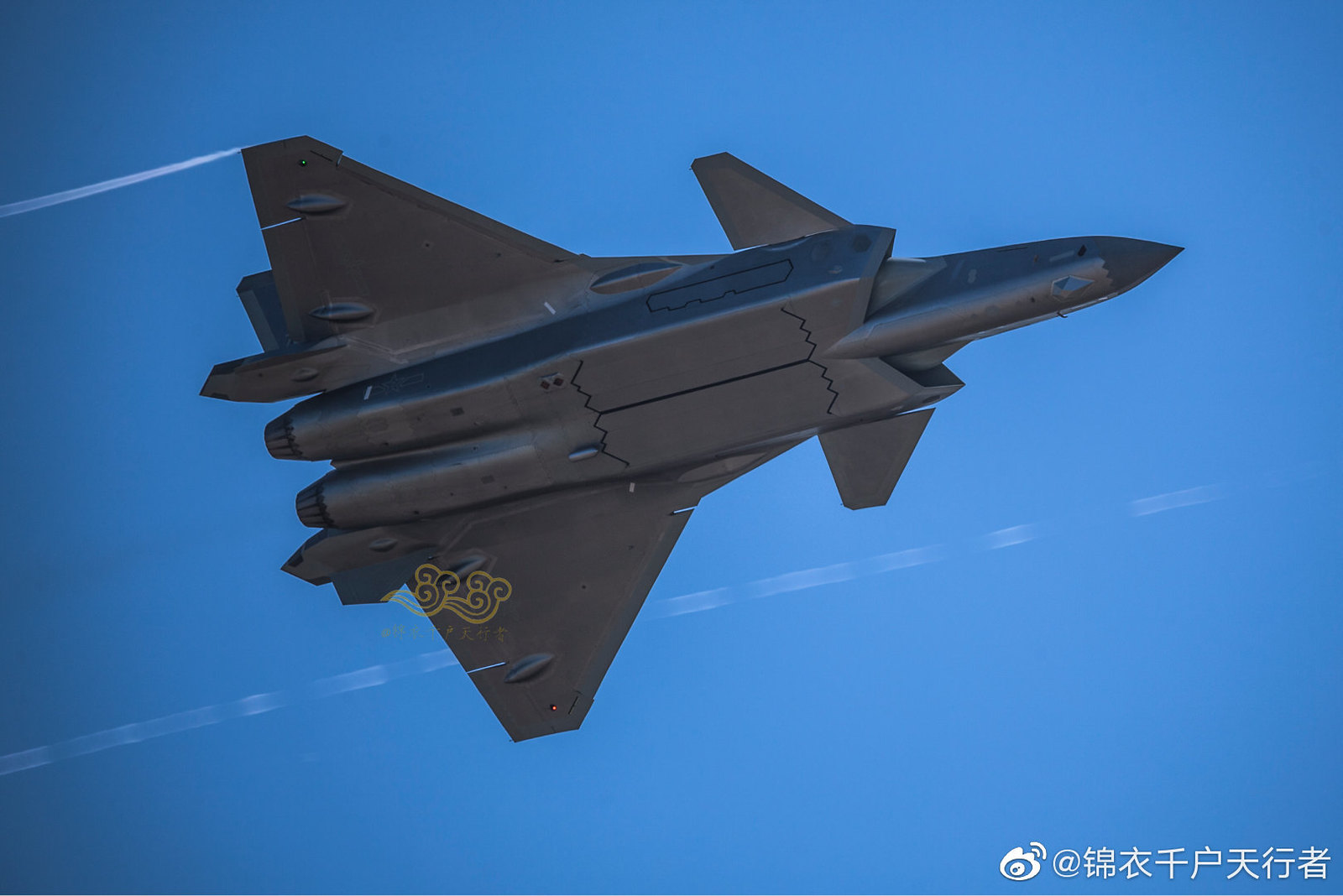You are using an out of date browser. It may not display this or other websites correctly.
You should upgrade or use an alternative browser.
You should upgrade or use an alternative browser.
J-20 5th Gen Fighter Thread VI
- Thread starter siegecrossbow
- Start date
- Status
- Not open for further replies.
Yeah, I know how you got those numbers; I'm saying they're not correct. Reread my comment you quoted and you'll see why it's wrong to use stock old/early AL-31F or WS-10X numbers on J-20. To think that J-20 might be powered by a 125kN AL-31F when J-10 uses a 137kN AL-31FN3 is just... not... smart. WS-10X figures might have been usable if it weren't for the AL-31FM2 providing 145kN thrust with the Chinese unlikely to downgrade the engine for its premier fighter just for indigenization (especially at a time when relations with Russia are very warm). That's why I said that the lowest realistic thrust for J-20A is 145kNx2 but it could be a bit higher.
I have seen some unreliable sources talk about a 197kN figure for WS-15; I have also seen some talk about a 220kN figure. They don't make sense to me. Most sources seem to center on 180kN and have previously (in the comment you quoted) outlined why it doesn't make sense to me for them to keep the engine still in prototype phase trying to get numbers that high rather that release it at 180kN (or even 170kN if they're having trouble) and open the bottleneck for J-20B production.
Could you post the sources you have for 197kN so we can better understand why you seem to have such high regard for a number that the rest of us generally view as a fanboy rumor?
The issue is, the AL-31s are Russian, not Chinese, and it's questionable as to which AL-31 the Russians would provide to the Chinese for testing and development purposes.
When you're working with prototypes, every "novel" element introduces a new point of failure and it's reasonable for the Chinese to use stock AL-31Fs at least in the earliest versions as the AL-31Fs are best understood given prolonged service in J-10s and J-11s.
On Wikipedia, there's a claim that the J-20 is using AL-31F M2s, which are 145 kN thrust engines used also on the Su-34 fighter-bombers. That is questionable, given that Al-31F M2s have never been in Chinese service.
As for the Al-31FN Series 3, the Al-31FN Series 3 is specifically designed for the J-10, which includes a different gearbox location than on the Al-31F. Since we know the J-20's engine compartment is designed for WS-15, the engine compartment might be large enough to incorporate a different gearbox location.
In either case, if you go with the Al-31F M2, and select the 180 kN thrust point, you still get roughly 1.45 T/W at 60% fuel and a bounding range of 22.5% T/W, which is high, but close enough to the range of American re-enginings of their fighter aircraft.
===
As for 197 kN, you know I've bashed those numbers as unrealistic, and others have pushed them as bench test figures, not installed thrust. But given that the F135 has reached 220 kN in bench tests, it's not unreasonable for the WS-15 to bench test 197 kN.
foxmulder_ms
Junior Member
Did the J20s open their main weapons bays during the parade? I cannot seem to find any pictures if they did. Thanks.
they didnt.
Air Force Day open house is now over. All images are high-resolution.

There's an outstanding lesson here for the proponents of a "tailless" J-20, or any other fighter aircraft for that matter..... there are times when you absolutely NEED all the control authority you can manage, this maneuver "ain't gonna happen" without those TWO all flying Verts....
and the nonsense Will Roper's flying circus talk of a B-21 with air to air missiles as our next "air dominance" platform is just some much "bull krap".....
could you throw a couple of A2A missiles on a B-21 for self defense? of course, but don't use a flying grocery cart for an air dominance platform..
by the way, I will be posting some tailless J-20 pixs, hopefully soon???
- Status
- Not open for further replies.

